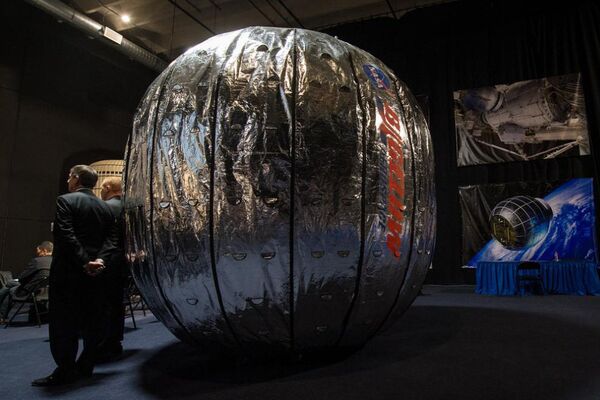WASHINGTON, January 17 (RIA Novosti) - The US National Aeronautics and Space Administration (NASA) said it wants to send an inflatable space pod to be attached to the International Space Station (ISS) by 2015, which could lead to a completely new and cheaper way to conduct future space missions.
NASA announced on Wednesday that it had signed a $17.8 million contract with Nevada-based Bigelow Aerospace to build the Bigelow Expandable Activity Module (BEAM), in the hopes of developing deep space habitats for future missions.
“As we venture deeper into space on the path to Mars, habitats that allow for long-duration stays in space will be a critical capability,” William Gerstenmaier, associate administrator for human exploration and operations at NASA, said in a press release on the NASA website.
Bigelow Aerospace specializes in creating expandable habitats like the BEAM, which will initially be launched to the ISS in a compact form and then inflated at the space station into a 13-by-10 foot (3.9 meter-by-3-meter) cylinder.
The module’s walls will be made of fabric making it easier to launch and then inflate in space.
“NASA’s partnership with Bigelow opens a new chapter in our continuing work to bring the innovation of industry to space, heralding cutting-edge technology that can allow humans to thrive in space safely and affordably,” said Lori Garver, NASA Deputy Administrator.
The BEAM will be launched to the ISS through another commercial spacecraft called the SpaceX Dragon and then astronauts will use a robotic arm to install the module, NASA stated on its website.
During a two-year test period after the inflatable module is attached to the ISS, crew members and engineers will gather data on the inflatable pod, such as its structural integrity and leak rate.
Instruments located within the module will also “provide important insights on its response to the space environment,” such as “radiation and temperature changes compared with traditional aluminum modules,” NASA stated on its website.
After the test period, the BEAM will be detached from the ISS and will burn and disintegrate upon entry back into Earth’s atmosphere.
In the past, NASA pursued the creation of inflatable modules through its own design called TransHab, or “Transit Habitat.” The program was ended in 2000 by the US Congress, and Bigelow licensed the patents and began to adapt the technology, Space.com reported.

